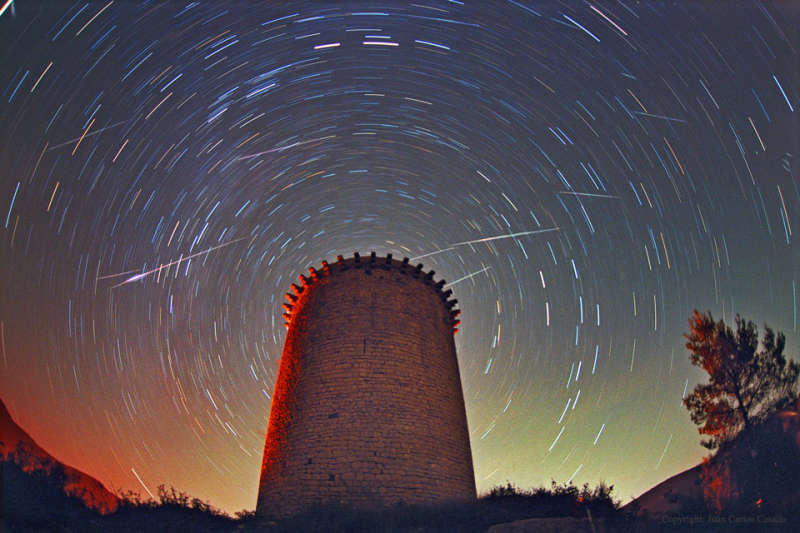Credit & Copyright: Juan Carlos Casado
(TWAN)
Explanation:
Leonids Meteor Shower came to an impressive crescendo in 1999.
Observers in Europe saw a
sharp peak in the number of
meteors visible around 0210
UTC
during the early morning hours of November 18.
Meteor counts then exceeded 1000 per hour - the minimum needed to define a
true meteor storm.
At other times and from other locations around the world, observers
typically reported
respectable rates of between 30 and 100
meteors per hour.
This photograph is a 20-minute exposure ending just
before the main Leonids peak began.
Visible are at least five
Leonid
meteors
streaking high above the Torre de la Guaita,
an observation tower used during the 12th century in
Girona,
Spain.
In 2014, over the next few nights, the
Leonids
meteor shower will again peak.
This year, although the crescent Moon should not create much competing skyglow, the
Earth
is predicted to pass
through
a more moderate stream of debris left over from
Comet Tempel-Tuttle than in 1999, perhaps resulting in
as many as 15 visible meteors per hour from dark locations.
1999 2000 2001 2002 2003 2004 2005 2006 2007 2008 2009 2010 2011 2012 2013 2014 2015 2016 2017 2018 2019 2020 2021 2022 2023 2024 2025 |
Yanvar' Fevral' Mart Aprel' Mai Iyun' Iyul' Avgust Sentyabr' Oktyabr' Noyabr' Dekabr' |
NASA Web Site Statements, Warnings, and Disclaimers
NASA Official: Jay Norris. Specific rights apply.
A service of: LHEA at NASA / GSFC
& Michigan Tech. U.
|
Publikacii s klyuchevymi slovami:
Leonids - Leonidy
Publikacii so slovami: Leonids - Leonidy | |
Sm. takzhe:
Vse publikacii na tu zhe temu >> | |
